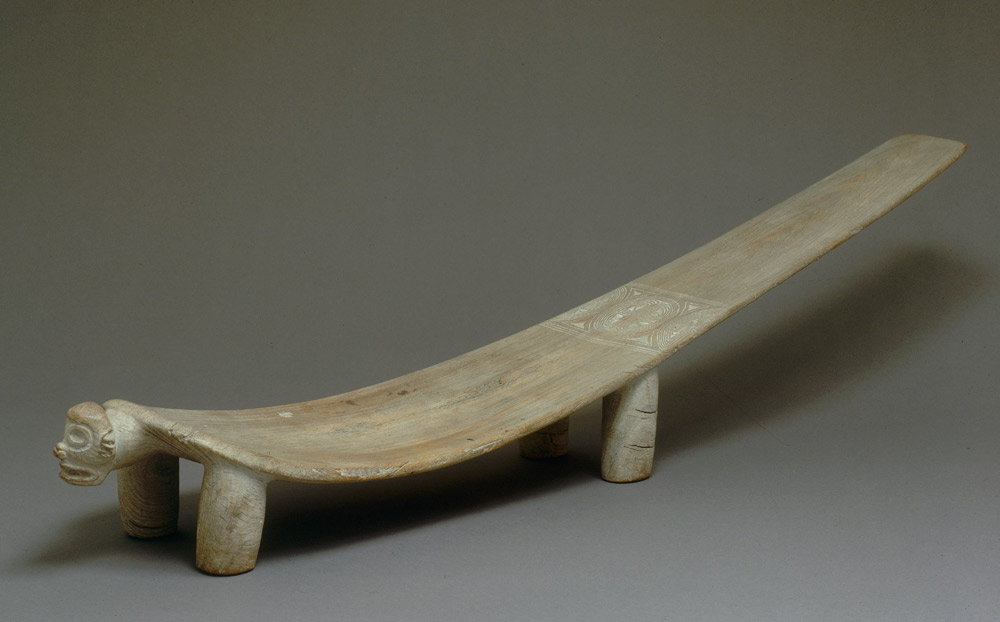
Lucayan duho (seat),
high-back style
AD 1000–1500
Turks and Caicos Islands, Bahamas
Wood
84 x 15 x 21 cm
Lady Edith Blake Collection
5/9385
The exchange of chiefly goods between high-ranking Taíno men and women is mentioned by Spanish cronistas, or chroniclers, who accompanied Columbus. The Admiral was given such gifts during his visits with different caciques and cacicas, or chiefs. Duhos were among the gifts offered by the well-remembered Cacica Anacaona as she sought good relations before her execution was ordered by Spanish captains. This duho is an exceptional piece: the carving on its upper back is among the most complex known on such objects. It is also among the largest duhos from the Caribbean. The piece epitomizes the duho style found north of Hispaniola and Puerto Rico, the Taíno heartland, in the islands of the Bahamas and Turks and Caicos; it is a local variant, handiwork of the Lucayano. The characteristics of this “northern” style include a low back, bulbous facial features, straight legs, and a horizontally cut end.
—Joanna Ostapkowicz
- NOTES
-
- Taíno, from nitaíno, meaning “good” or “noble,” has come to refer to the people inhabiting the islands of Hispaniola (Quisqueya), Puerto Rico (Boriquen), Jamaica (Xamayca), and Cuba at the time of European contact. The name, however, masks the cultural complexity and diversity that was present in the Greater Antilles at this time.
- REFERENCES
-
- Ostapkowicz, Joanna. “To be seated with ‘great courtesy and veneration’: Contextual aspects of the Taíno Duho.” In Taíno: Pre-Columbian Art and Culture from the Caribbean. Oxford: Monacelli, 1997.

